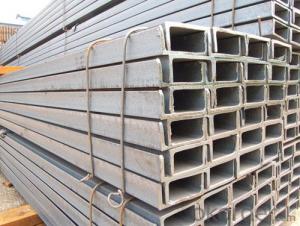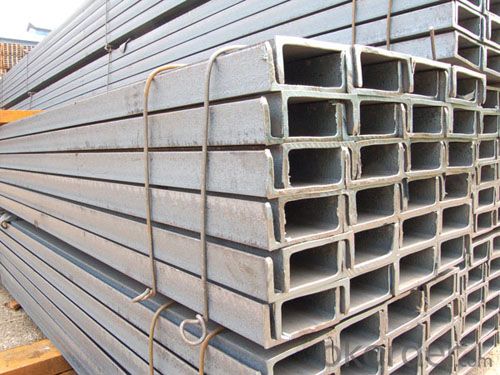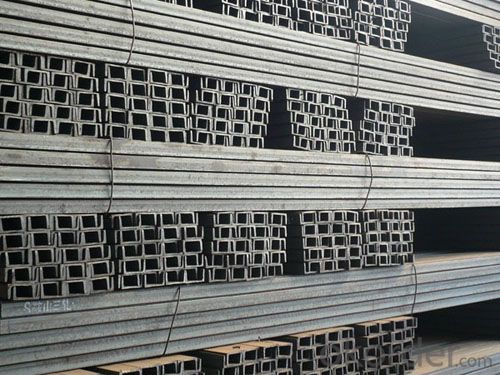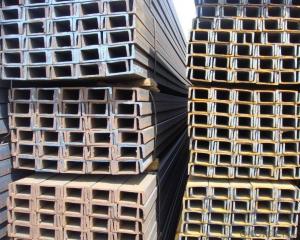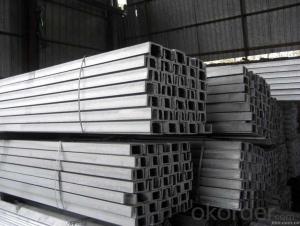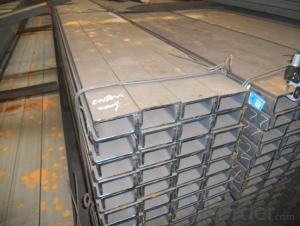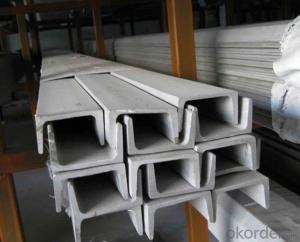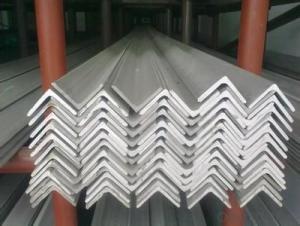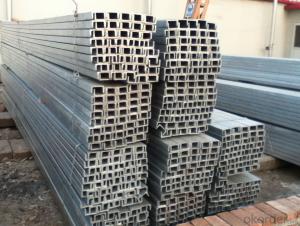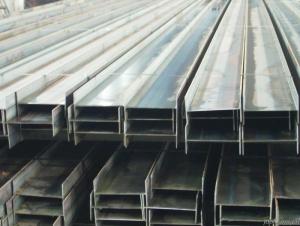JIS U Channel Or GB U Channel 50-300MM Or UPN
- Loading Port:
- Tianjin
- Payment Terms:
- TT OR LC
- Min Order Qty:
- 25 m.t.
- Supply Capability:
- 100000000 m.t./month
OKorder Service Pledge
OKorder Financial Service
You Might Also Like
Product Description:
OKorder is offering high quality JIS U Channel Or GB U Channel 50-300MM Or UPN at great prices with worldwide shipping. Our supplier is a world-class manufacturer of steel, with our products utilized the world over. OKorder annually supplies products to European, North American and Asian markets. We provide quotations within 24 hours of receiving an inquiry and guarantee competitive prices.
Product Applications:
According to the needs of different structures, Angle can compose to different force support component, and also can be the connections between components. It is widely used in various building structures and engineering structures such as roof beams, bridges, transmission towers, hoisting machinery and transport machinery, ships, industrial furnaces, reaction tower, container frame and warehouse etc
Product Advantages:
OKorder's JIS U Channel Or GB U Channel 50-300MM Or UPN are durable, strong, and resist corrosion.
Main Product Features:
· Premium quality
· Prompt delivery & seaworthy packing (30 days after receiving deposit)
· Corrosion resistance
· Can be recycled and reused
· Mill test certification
· Professional Service
· Competitive pricing
Product Specifications:
Manufacture: Hot rolled
Grade: Q195 – 235
Certificates: ISO, SGS, BV, CIQ
Length: 6m – 12m, as per customer request
Packaging: Export packing, nude packing, bundled
Sizes: 25mm-250mm | ||||||||||
a*t | ||||||||||
25*2.5-4.0 | 70*6.0-9.0 | 130*9.0-15 | ||||||||
30*2.5-6.6 | 75*6.0-9.0 | 140*10-14 | ||||||||
36*3.0-5.0 | 80*5.0-10 | 150*10-20 | ||||||||
38*2.3-6.0 | 90*7.0-10 | 160*10-16 | ||||||||
40*3.0-5.0 | 100*6.0-12 | 175*12-15 | ||||||||
45*4.0-6.0 | 110*8.0-10 | 180*12-18 | ||||||||
50*4.0-6.0 | 120*6.0-15 | 200*14-25 | ||||||||
60*4.0-8.0 | 125*8.0-14 | 250*25 | ||||||||
FAQ:
Q1: Why buy Materials & Equipment from OKorder.com?
A1: All products offered byOKorder.com are carefully selected from China's most reliable manufacturing enterprises. Through its ISO certifications, OKorder.com adheres to the highest standards and a commitment to supply chain safety and customer satisfaction.
Q2: How do we guarantee the quality of our products?
A2: We have established an advanced quality management system which conducts strict quality tests at every step, from raw materials to the final product. At the same time, we provide extensive follow-up service assurances as required.
Q3: How soon can we receive the product after purchase?
A3: Within three days of placing an order, we will begin production. The specific shipping date is dependent upon international and government factors, but is typically 7 to 10 workdays.
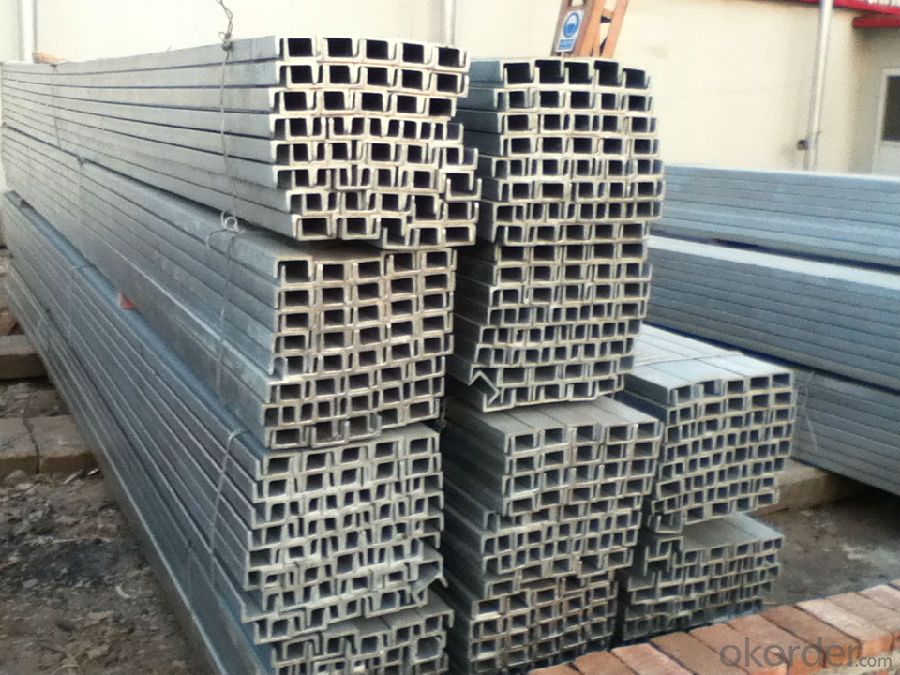
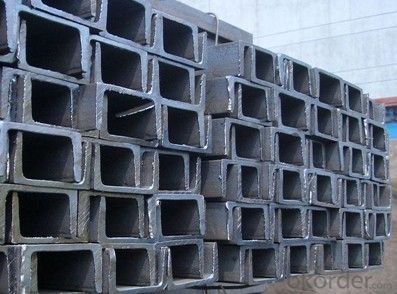
- Q: What are the different types of bracing for steel channels?
- There are several different types of bracing options available for steel channels, depending on the specific requirements and structural design of the project. Some of the common types of bracing for steel channels include: 1. Lateral Bracing: Lateral bracing is used to prevent the steel channels from buckling or twisting under lateral loads. This can be achieved through the use of cross-bracing, which involves diagonal members connected between the channels to provide stability. Lateral bracing can also be achieved through the use of perpendicular bracing members attached to the channels. 2. Diagonal Bracing: Diagonal bracing involves the use of diagonal members connected between the steel channels to resist the horizontal forces and provide stability. Diagonal bracing is commonly used in structures such as trusses and frames to resist wind and seismic loads. 3. Tension Bracing: Tension bracing is used to resist tensile forces in the steel channels. This can be achieved through the use of tension rods or cables connected to the channels. Tension bracing is commonly used to provide additional support and stability in structures with long spans or heavy loads. 4. Compression Bracing: Compression bracing involves the use of compression members connected to the steel channels to resist compressive forces. This type of bracing is commonly used to provide additional support and stability in structures with high vertical loads or in structures subjected to buckling. 5. Shear Bracing: Shear bracing is used to resist shear forces in the steel channels. This can be achieved through the use of shear plates or angles connected to the channels. Shear bracing is commonly used in structures subjected to lateral loads or in structures with high shear forces, such as bridges. It is important to note that the specific type of bracing used for steel channels will depend on factors such as the structural design, load requirements, and building codes/regulations. Consulting with a structural engineer or a professional with expertise in steel construction is recommended to determine the most suitable bracing option for a specific project.
- Q: What are the different joining methods for steel channels?
- Steel channels can be joined using several different methods, each with its own advantages and disadvantages. 1. Welding: One commonly used method is welding, which involves heating and melting the edges of the channels together. This creates a strong and permanent bond. Welding can be done using techniques like arc welding, MIG welding, or TIG welding. However, it can be time-consuming and requires skilled workers. 2. Bolting: Another common method is bolting, where bolts or screws are used to secure the channels. This method is relatively quick and easy, allowing for easy disassembly if needed. However, it may not provide as strong of a connection as welding. 3. Riveting: Riveting involves using metal rivets to join the channels. Rivets are inserted into pre-drilled holes and then deformed to create a secure connection. Riveting provides a strong and durable joint, but it can be time-consuming and requires special tools. 4. Adhesive bonding: Adhesive bonding uses specialized adhesives to join the channels. The adhesive is applied to the surfaces and allowed to cure, creating a strong bond. This method is often used for aesthetic purposes as it doesn't leave visible fasteners. However, adhesive bonding may not be as strong as other methods and may require surface preparation. 5. Mechanical fasteners: Mechanical fasteners like clips, brackets, or clamps can also be used. These provide a secure and adjustable connection. They are easy to install and remove, making them suitable for temporary or adjustable structures. However, they may not offer the same level of strength as other methods. The choice of joining method depends on factors like strength requirements, ease of installation, disassembly needs, and aesthetics. It's important to consider these factors and choose the most appropriate method for each specific application.
- Q: How do steel channels contribute to the overall design flexibility of a project?
- Steel channels contribute to the overall design flexibility of a project in several ways. Firstly, steel channels are available in a wide range of sizes and dimensions, allowing architects and engineers to choose the most suitable channel for the specific structural requirements of their project. This variety in sizes enables designers to create complex and intricate designs, accommodating various load-bearing needs. Additionally, steel channels can be easily cut, welded, and modified, making them highly customizable. This flexibility allows for the creation of unique and innovative designs that meet the specific needs and vision of the project. Whether it is for constructing beams, columns, or frameworks, steel channels can be manipulated to fit the desired shape and size, providing endless possibilities for architectural creativity. Moreover, steel channels offer excellent strength-to-weight ratio, ensuring the structural integrity of the project while minimizing material usage. This attribute allows for more efficient use of resources and cost-effective construction. Steel channels also possess excellent durability, corrosion resistance, and fire resistance properties, making them suitable for a wide range of applications across various industries. In summary, the use of steel channels in a project enhances design flexibility by offering a diverse range of sizes, customization options, and excellent strength-to-weight ratio. These attributes enable architects and engineers to create unique and efficient designs that meet specific requirements while ensuring durability and cost-effectiveness.
- Q: How are steel channels used in the automotive industry?
- Steel channels are commonly used in the automotive industry for various applications. They are primarily used in the construction of car frames and chassis, providing structural support and rigidity. Steel channels also play a crucial role in reinforcing various components such as bumpers, doors, and engine mounts, ensuring safety and enhanced durability. Additionally, they are used in the manufacturing of suspension systems, steering columns, and other mechanical parts, contributing to the overall performance and longevity of vehicles.
- Q: What are the maintenance requirements for steel channels?
- The maintenance requirements for steel channels typically involve regular cleaning to remove dirt and debris, as well as preventing corrosion by applying protective coatings or paint. Additionally, regular inspections should be conducted to identify any signs of damage or wear, and necessary repairs or replacements should be made promptly.
- Q: Difference between steel channel and channel steel!
- It shouldn't make any difference, but I'm not sure.
- Q: What are the different cutting techniques for steel channels?
- Steel channels can be cut using various techniques, depending on specific requirements and available equipment. Common cutting methods for steel channels include: 1. Shearing: Straight lines in steel channels can be quickly and efficiently cut using tools like shears or guillotines. 2. Plasma cutting: Cutting through steel channels is achieved by utilizing a high-velocity plasma jet that melts and cuts the material. This technique is suitable for both straight lines and complex shapes. 3. Laser cutting: A precise and clean cut is achieved by employing a high-powered laser beam that melts and vaporizes the steel channel. Laser cutting is commonly used for intricate and detailed cuts. 4. Waterjet cutting: A high-pressure jet of water mixed with abrasives is used to cut through the steel channel. This technique is capable of handling different materials and thicknesses, providing accurate cuts. 5. Sawing: Steel channels are cut using saw blades with teeth, such as band saws or circular saws, depending on the thickness and size of the channel. 6. Flame cutting: Also known as oxy-fuel cutting, this method involves using a fuel gas and oxygen flame to heat and melt the steel channel. A jet of pure oxygen is then used to blow away the molten metal. Flame cutting is effective for cutting thick steel channels and is commonly used in heavy-duty applications. Each cutting technique offers distinct advantages and limitations, depending on factors such as desired cut quality, speed, precision, and material thickness. It is crucial to consider these factors and select the appropriate cutting technique for the specific application.
- Q: How do steel channels contribute to sustainable design in buildings?
- Steel channels play a crucial role in promoting sustainable design in buildings due to their numerous advantages in terms of durability, recyclability, and energy efficiency. Firstly, steel channels are known for their exceptional durability, which contributes to the longevity of buildings. Unlike other materials, steel channels have a high resistance to corrosion, weathering, and pests. This durability reduces the need for frequent maintenance and replacement, leading to a decrease in the overall environmental impact of the building. Secondly, steel channels are highly recyclable. At the end of a building's life cycle, steel channels can be easily dismantled and recycled, ensuring that they do not end up in landfills. This recycling process requires significantly less energy compared to the production of new steel, resulting in reduced carbon emissions and conservation of natural resources. Furthermore, steel channels enable energy-efficient designs in buildings. Due to their high strength-to-weight ratio, steel channels allow for the construction of lighter structures, reducing the amount of material required. This, in turn, leads to a decrease in energy consumption during construction and transportation. Additionally, steel channels can be easily integrated with insulation systems, improving the building's thermal performance and reducing the need for excessive heating or cooling. Moreover, steel channels can be prefabricated off-site, minimizing construction waste and improving productivity through precise manufacturing. This process reduces the environmental impact of construction activities, such as noise, dust, and energy consumption. Lastly, steel channels provide design flexibility, allowing architects and engineers to create innovative and sustainable structures. Their versatile nature allows for the implementation of various design techniques, such as modular construction and adaptive reuse. These strategies contribute to sustainable development by optimizing space, reducing material waste, and promoting resource efficiency. In conclusion, steel channels are an essential component of sustainable design in buildings. Their durability, recyclability, energy efficiency, and design flexibility contribute to the reduction of environmental impact, conservation of resources, and promotion of sustainable practices in the construction industry.
- Q: How do steel channels compare to other construction materials?
- Steel channels have several advantages over other construction materials. Firstly, they are incredibly strong and durable, making them suitable for supporting heavy loads and withstanding extreme weather conditions. Secondly, steel channels offer excellent fire resistance compared to materials like wood or plastic. Additionally, steel channels are versatile and can be easily customized to meet specific project requirements. Finally, steel channels are also more cost-effective in the long run as they require minimal maintenance and have a longer lifespan compared to other materials.
- Q: Can steel channels be used for support beams?
- Indeed, support beams can be made using steel channels. In construction, steel channels are frequently employed due to their exceptional strength and durability. They are well-suited for offering structural support and can serve as beams for bearing hefty loads. Steel channels possess versatility and can be utilized in diverse scenarios, such as bridges, buildings, and infrastructure undertakings. With their capacity to endure substantial weights and provide stability, steel channels emerge as an appropriate selection for support beams.
Send your message to us
JIS U Channel Or GB U Channel 50-300MM Or UPN
- Loading Port:
- Tianjin
- Payment Terms:
- TT OR LC
- Min Order Qty:
- 25 m.t.
- Supply Capability:
- 100000000 m.t./month
OKorder Service Pledge
OKorder Financial Service
Similar products
Hot products
Hot Searches
Related keywords
